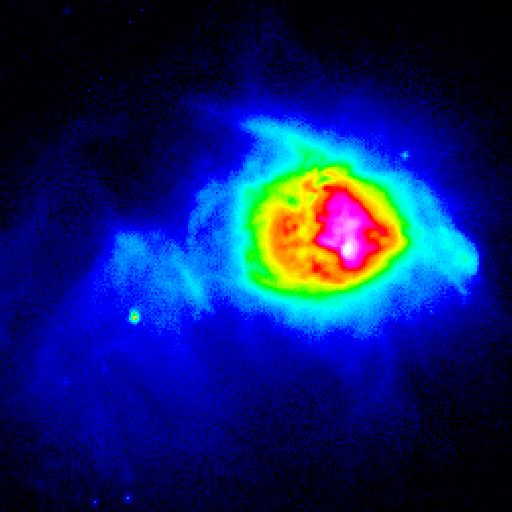Explanation: The bright blob of hydrogen gas cataloged as N88A is seen at the right. It measures a mere 3 light years across. Emerging from the cool, dusty interstellar medium in a nearby irregular galaxy known as the Small Magellanic Cloud, N88A hides hot young stars at its core. The false-color Hubble Space Telescope image was recorded in the characteristic "H-alpha" light emitted by hydrogen atoms as they are ionized by the young star's energetic ultraviolet light and then recombine. Other regions of ionized hydrogen (H II regions) which surround new born stars can be over a thousand light-years across but astronomers now recognize that these small ionized hydrogen blobs contain some of the most massive stars known.
1999 2000 2001 2002 2003 2004 2005 2006 2007 2008 2009 2010 2011 2012 2013 2014 2015 2016 2017 2018 2019 2020 2021 2022 2023 2024 2025 |
Январь Февраль Март Апрель Май Июнь Июль Август Сентябрь Октябрь Ноябрь Декабрь |
NASA Web Site Statements, Warnings, and Disclaimers
NASA Official: Jay Norris. Specific rights apply.
A service of: LHEA at NASA / GSFC
& Michigan Tech. U.
|
Публикации с ключевыми словами:
ionization - hydrogen - star formation - Малое Магелланово Облако - молодые звезды - Ультрафиолетовое излучение - области ионизованного водорода - области HII
Публикации со словами: ionization - hydrogen - star formation - Малое Магелланово Облако - молодые звезды - Ультрафиолетовое излучение - области ионизованного водорода - области HII | |
См. также:
Все публикации на ту же тему >> | |
